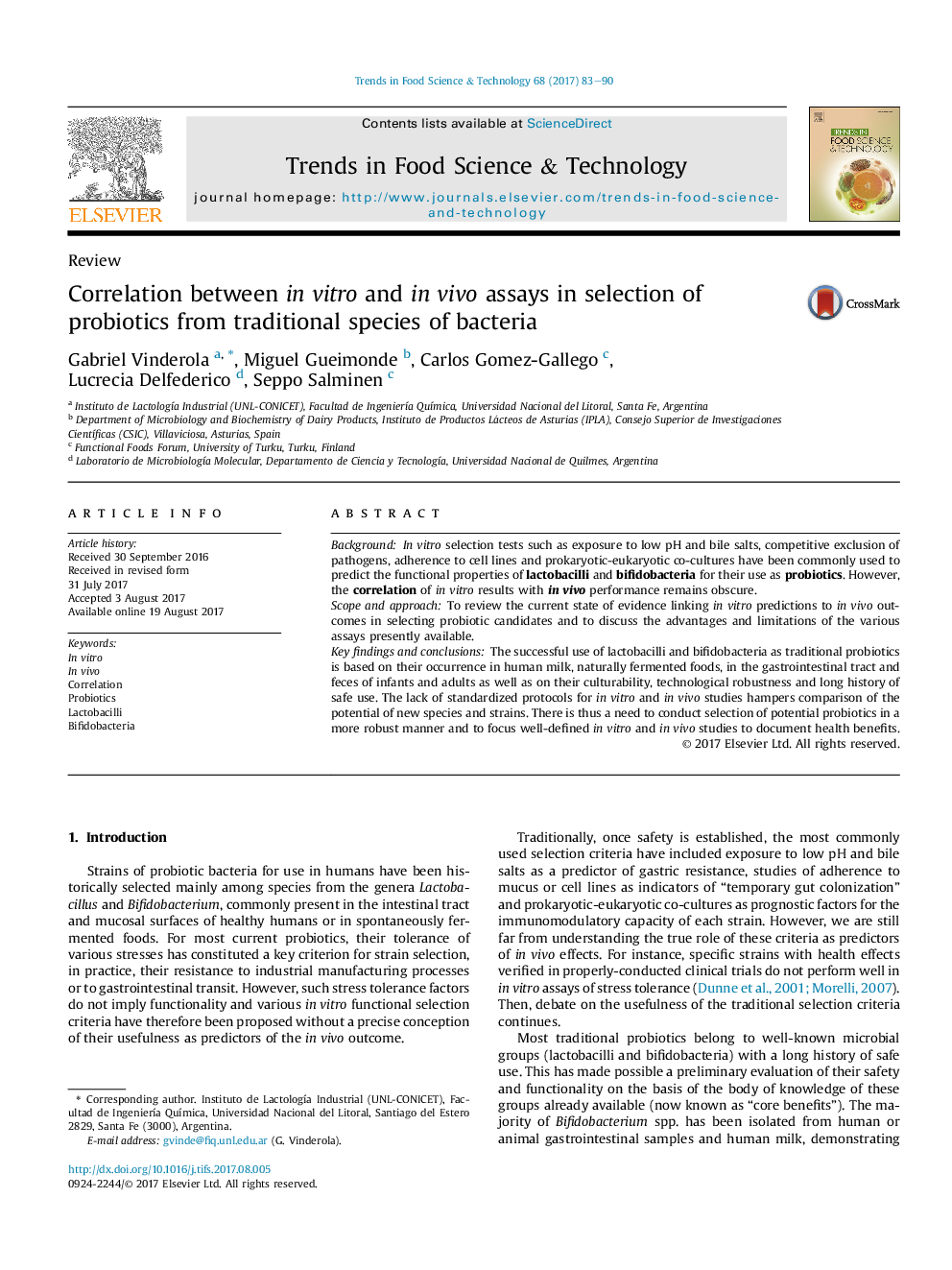| Article ID | Journal | Published Year | Pages | File Type |
|---|---|---|---|---|
| 5523626 | Trends in Food Science & Technology | 2017 | 8 Pages |
â¢Lactobacilli and bifidobacteria are traditional probiotics based on their documented benefits and long history of safe use.â¢The value of in vitro tests as predictors of probiotic capacity is still uncertain.â¢There is a lack of standardized in vitro protocols for strain selection.â¢Nevertheless, present criteria allow narrowing down potential candidates when selecting new strains.
BackgroundIn vitro selection tests such as exposure to low pH and bile salts, competitive exclusion of pathogens, adherence to cell lines and prokaryotic-eukaryotic co-cultures have been commonly used to predict the functional properties of lactobacilli and bifidobacteria for their use as probiotics. However, the correlation of in vitro results with in vivo performance remains obscure.Scope and approachTo review the current state of evidence linking in vitro predictions to in vivo outcomes in selecting probiotic candidates and to discuss the advantages and limitations of the various assays presently available.Key findings and conclusionsThe successful use of lactobacilli and bifidobacteria as traditional probiotics is based on their occurrence in human milk, naturally fermented foods, in the gastrointestinal tract and feces of infants and adults as well as on their culturability, technological robustness and long history of safe use. The lack of standardized protocols for in vitro and in vivo studies hampers comparison of the potential of new species and strains. There is thus a need to conduct selection of potential probiotics in a more robust manner and to focus well-defined in vitro and in vivo studies to document health benefits.
